Migrants sleeping on streets, a city overwhelmed: What Biden can expect in El Paso border visit
- Oops!Something went wrong.Please try again later.
If the border fence divides two neighbors, a crisis on one side spells trouble for the other.
As President Joe Biden seeks answers to a historic, growing migration crisis that no administration has solved, his visit Sunday to El Paso may offer a warning of the risks of exporting tens of thousands of vulnerable migrants to Mexico, just steps away.
"The situation at the border has gotten increasingly more challenging," said Theresa Cardinal Brown, an advisor with the Dallas-based George W. Bush Institute. "It’s a humanitarian crisis, a political crisis, a procedural crisis, a local government crisis and an international crisis."
If given the chance, the president will see the humanitarian crisis among the people sleeping under Red Cross blankets outside the Sacred Heart Catholic Church. He will witness the political crisis in the concertina wire coiled at the edge of the Rio Grande by the Texas National Guard. And if brought to gaze over the border to Juárez, he will see the international crisis in the faces of migrants expelled by the U.S. as they look north, waiting.
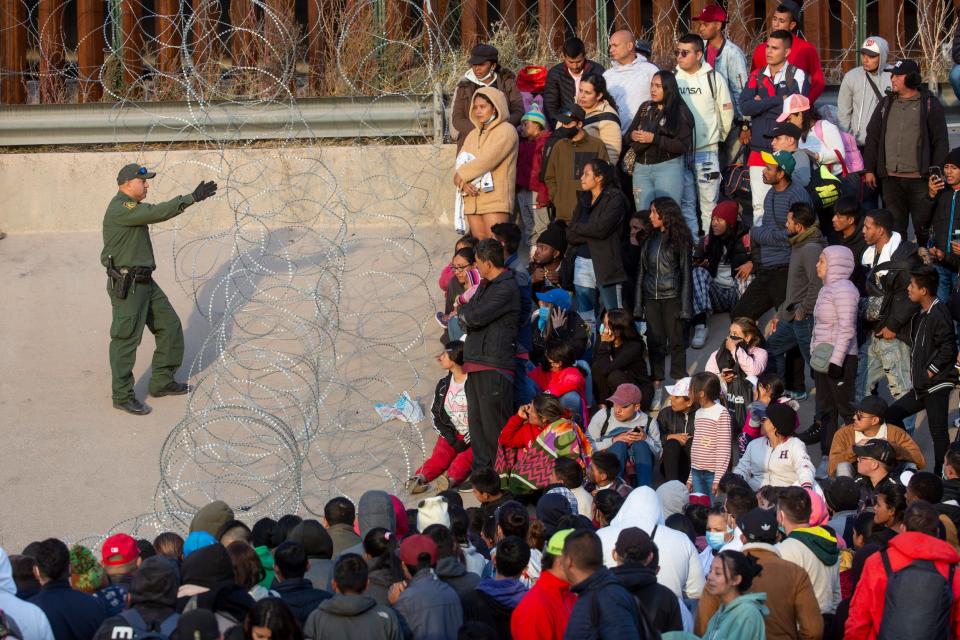
The White House hasn't released the agenda of Biden's visit to El Paso — a border city under a state of emergency that is looking to the president for leadership.
"This city has become central to talking about the border," said Jeremy Slack, a professor of geography at the University of Texas at El Paso and author of "Deported to Death: How Drug Violence is Changing Migration on the U.S. Mexico Border. "It’s the biggest city on the border. It’s isolated but it’s also a big urban hub in this ocean of desert."
Biden is banking that his new immigration policies will keep more migrants from traveling the dangerous route to the border and ease the humanitarian crisis in U.S. border cities. It's all but certain the consequences of the plan will reveal themselves in El Paso in tangible, inescapable ways.
The geopolitical crises driving migration to the El Paso border will be a core topic at the North American summit this week in Mexico City, where Biden is headed next. He, Mexican President Andrés Manuel López Obrador and Canadian Prime Minister Justin Trudeau are expected to discuss regional solutions to hemispheric migration challenges.
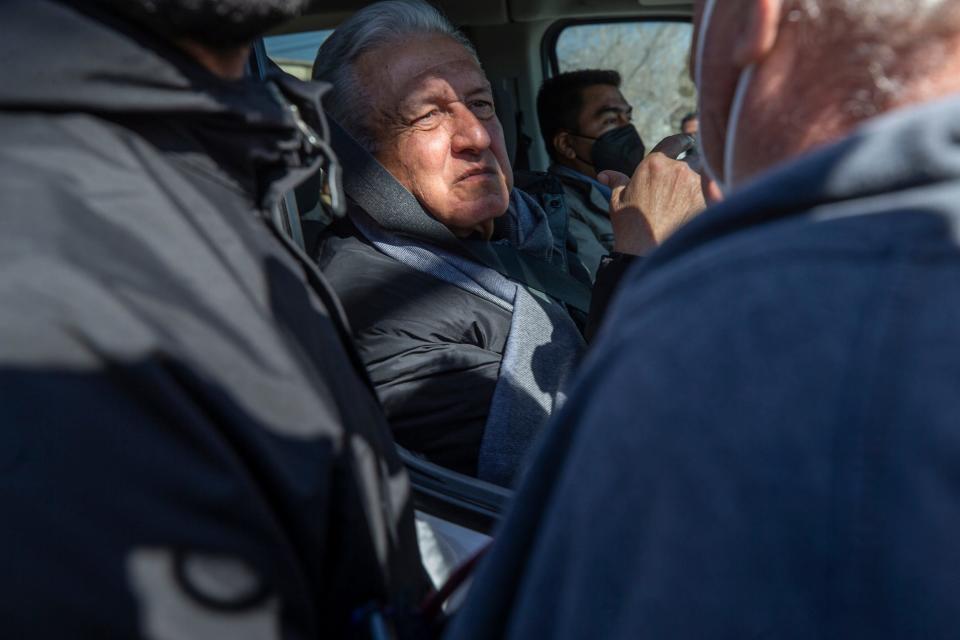
"We needed a border strategy," said Brown, who also serves as senior advisor to the Washington, D.C.-based Bipartisan Policy Institute. "How does North America deal with regional migration? What can these three countries do to lead on hemispheric migration? There is a symbolism in him going to El Paso, where we have to see the effectiveness of these new measures."
The Borderland is where the policies and proclamations hatched in far-flung national capitals become individual stories of survival, deception, desperation — and hope.
More:President Biden plans to visit El Paso Sunday; here's what you need to know about the trip
Witnessing mass migration
El Paso and Juárez are the largest binational community on the nearly 2,000-mile U.S.-Mexico border.
The sister cities of the Paso del Norte have been the epicenter of a migration-driven humanitarian crisis for months now: More than 50,000 asylum seekers and other migrants arrived each in October, November and December, according to U.S. Customs and Border Protection.
Hundreds of Venezuelans, faced with expulsion to Mexico, crossed into El Paso without turning themselves in to border agents. Many were camped on city streets, hopeful they'll be allowed to remain in the country. Border Patrol made dozens of arrests last week.
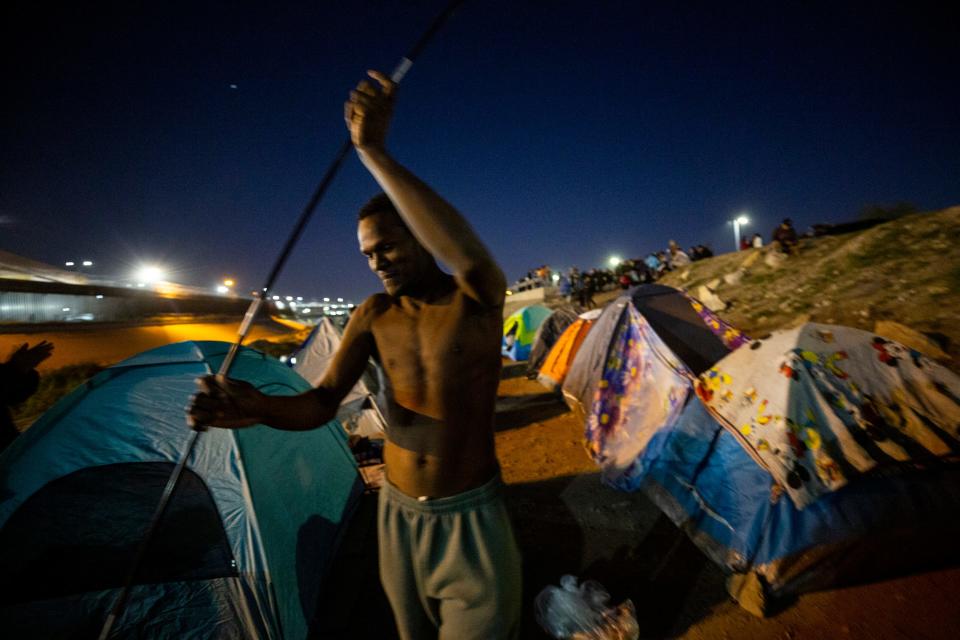
The numbers represent a political tsunami even in a region accustomed to a century of human migration across the U.S.-Mexico border.
Biden, who took office in 2021, has served in Washington, D.C., for half that time. As a U.S. senator from Delaware, then as vice president during the administration of Barack Obama and now as U.S. president, Biden has witnessed, guided or created 50 years of border and immigration policy.
He voted, alongside 62 of his Senate Democrat and Republican colleagues, for the Immigration Reform and Control Act in 1986 — the last bipartisan, comprehensive overhaul of U.S. immigration policy. It was a time when millions of Mexican laborers were crossing unlawfully after the legal path open to them, the Bracero Program, ended.
During the Obama administration, when Biden was vice president, unauthorized migration at the Southwest border fell to its lowest level in 40 years amid a global recession, an expansion in Border Patrol hiring and the administration's reliance on a "consequence delivery system" in which adult migrants were prosecuted and given jail time for crossing the border illegally.
But the demographics began to shift.
In 2014, children began to arrive at the border on their own: more than 68,000 that year alone. Then, families began to arrive, often with small children in tow. People began to seek asylum — one of few legal paths into the country. And though the U.S. asylum system offers protection for narrowly defined reasons on a case-by-case basis, the claims have historically been heard by an immigration judge or asylum officer and can take years to resolve.
The United States government has struggled to cope.
Congress has failed to reform the nation's immigration laws to address the U.S. labor needs and new global realities. Presidents who have used their executive power to harden border enforcement or expand immigration opportunities find their policies tied up by court challenges from both sides of the political aisle. The constantly shifting, complex changes are often misunderstood by the migrants they are designed to help or control, and smugglers can easily exploit their vulnerability.
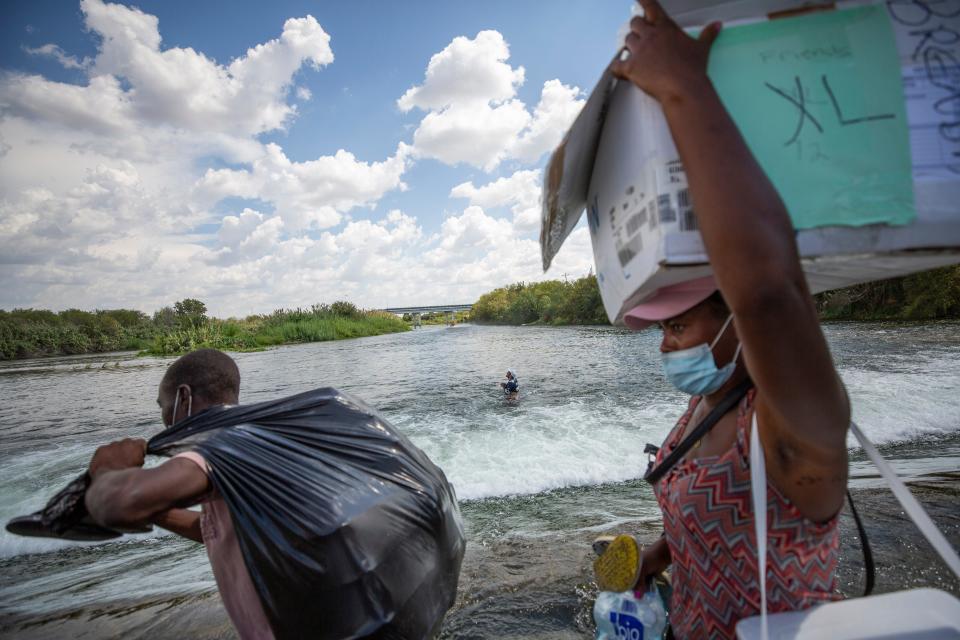
The Biden administration understands that the Western Hemisphere is experiencing the largest displacement of people since World War II.
The new border policies create additional legal pathways for as many as 360,000 Venezuelan, Cuban, Nicaraguan and Haitian migrants this year. Mexico called the plan "the most significant expansion of labor mobility in contemporary U.S. history" and an "important alternative to irregular migration."
Immigrant advocates said the plan offers no relief for the poorest migrants fleeing poverty, violence and oppressive regimes, including many who are stuck at the border.
El Paso and other border communities await the consequences with tired, open arms.
Dig DeeperWhat is Title 42, when does it end, how does it impact US-Mexico border? Here's what to know
Leadership demanded during migrant crisis
Genner Ruggeri leaned against the wrought-iron fence outside the Sacred Heart Catholic church in the city's historic Segundo Barro last week. After a four-month journey from Venezuela, the 26-year-old hit a dead end in El Paso.
Facing the threat of expulsion to Mexico, he crossed the border without permission.
Ruggeri wouldn't have qualified for the Biden administration's new pathway for Venezuelans, nor did he qualify for the 24,000 visas offered in October. He carried an expired passport, had no money for a plane ticket and no sponsor in the U.S. — all requirements for Biden's legal pathway. He said he was robbed of his cellphone in Mexico and couldn't have downloaded the CBP One application to apply for the new visas made available last week.
"I had no option but to keep going," he said.
He knew Biden was paying a visit: "I'd like him to know that there is a group of Venezuelans who just want to work and make something of their lives. We can't live freely in Venezuela."
All around him, men, women and children crowded the sidewalk. The city kept a "warming" bus parked nearby for people to step out of the cold. A gray-haired volunteer served up Styrofoam trays of rice, beans and salad on a chilly afternoon. Women sorted through bags of donated clothes and tried to create a semblance of order.
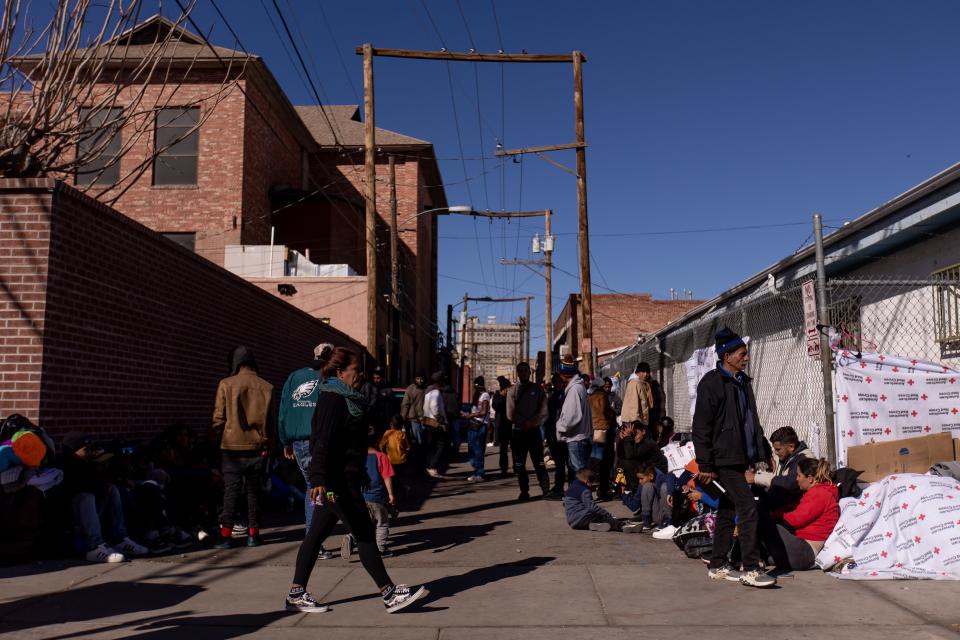
"We continue to see ongoing arrivals and ongoing serial expulsions of vulnerable persons with credible asylum claims," said Dylan Corbett, executive director of the Hope Border Institute, a Catholic advocacy organization. "People huddling in a cold Downtown overnight were arrested by Border Patrol and their whereabouts are unknown.
"I would like to see this administration marshal a moral argument," Corbett said. "This is the leadership that is demanded of the United States at this moment, to be a good neighbor in this region. The poor and the vulnerable who are at our nation’s doorstep deserve more."
Hope for 'a more humane border'
The city of El Paso spent nearly $10 million last year providing humanitarian support for migrants and has been reimbursed for $6 million by the federal government; FEMA has fronted $6.3 million to El Paso County.
The money has paid for a massive mobilization of resources including transportation, overnight shelter, hot meals and warming centers for people who arrive with nothing but the clothes they are wearing. The city is using vacant school buildings and the convention center to temporarily shelter asylum seekers who crossed the border lawfully.
For decades, El Paso had relied on the Annunciation House network of nonprofit and faith-based shelters to welcome and care for migrants. But the pandemic strained the network's ability to recruit volunteers and churches to the effort. Local government had little choice but to step in.
"El Paso is an extraordinarily welcoming city," said Fernando Garcia, executive director of the Border Network for Human Rights. "We are very proud of that. But there is a fundamental disappointment with what this administration has done. There has been no immigration reform. There has been continuation of Trump’s racist policies, and it doesn’t seem that we have a more humane border.
"We have been calling for massive investment in welcoming infrastructure," he said. "A broken system — broken by multiple administrations — cannot be resolved and sustained by NGOs or local governments."
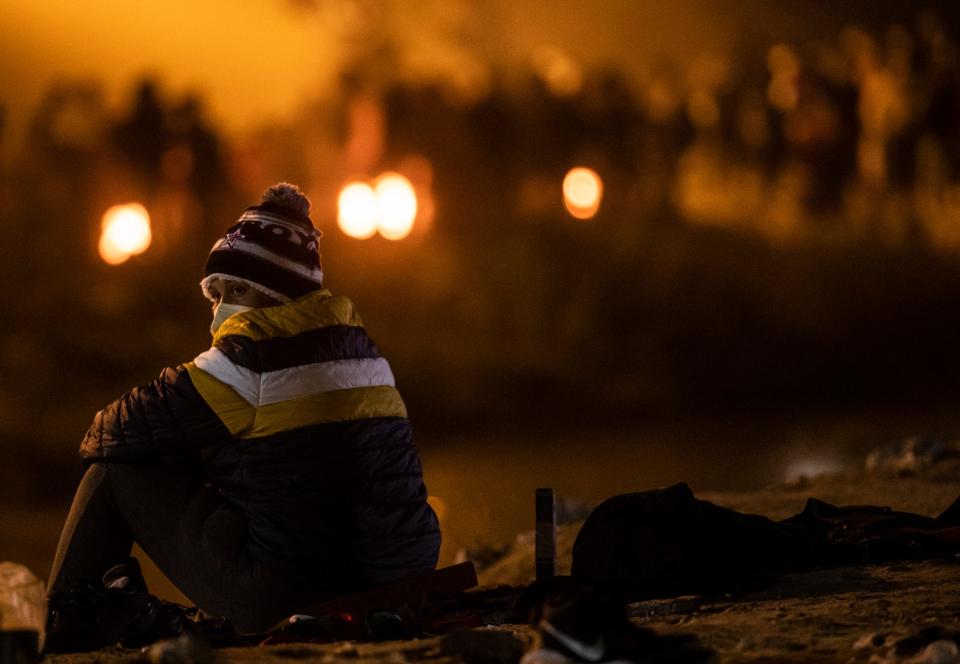
Borderland leaders said they hoped Biden's time in El Paso might inspire him to push harder for comprehensive reform in his third year in office, or champion the ideas of border-based advocates and lawmakers.
El Paso Democrat U.S. Rep. Veronica Escobar has proposed establishing humanitarian processing centers at the southern border, an idea supported by Borderland advocates who are aiding migrants.
Biden emphasized in remarks Thursday that, on his first day in office, he submitted a legislative proposal to Congress to overhaul the immigration system and border enforcement. A year later, in his first State of the Union, he again called on Congress to "secure the border and fix the immigration system."
"This crisis is not going away," said Isabel Salcido, an El Paso city councilor, said in a statement after the president's remarks. "We desperately need the help and leadership of Congress and the White House. The City of El Paso is doing all it can in its capacity with this federal issue."
Based on her conversations with asylum seekers in El Paso and others waiting in Juárez, she said, "I can assure you, most of them are not returning to their home countries. They have traveled thousands of miles to flee socialism, oppression, famine and guaranteed death sentences. Most made the dangerous trek and fought off cartels and traffickers, dangerous weather and terrain, to seek a better life in the United States of America."
The president's policies allow U.S. border authorities to return 30,000 people each month to Mexico — those who won't clear the bar for a preapproved U.S. visa.
What the expelled migrants will do in Mexico, whether they will be allowed to stay or work, is unclear. Inevitably, advocates say and recent history has shown, many could resort to crossing illegally.
The migrants will say Mexico is too dangerous for them to stay, targeted as they are by corrupt police and criminals. They'll say they've made it this far. They'll say they'll keep aiming for their American dream.
From where they stand, El Paso's star on the mountain will glow each night like a beacon, like the Statue of Liberty's "lamp beside the golden door."
This article originally appeared on USA TODAY: El Paso visit: Biden tours migrant crisis on US-Mexico border

